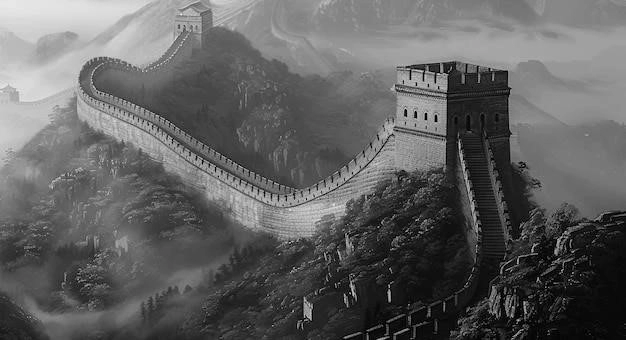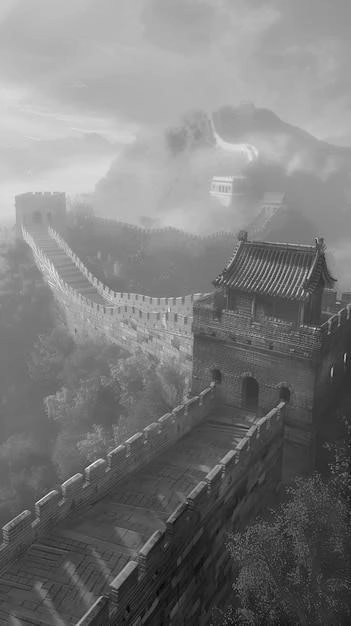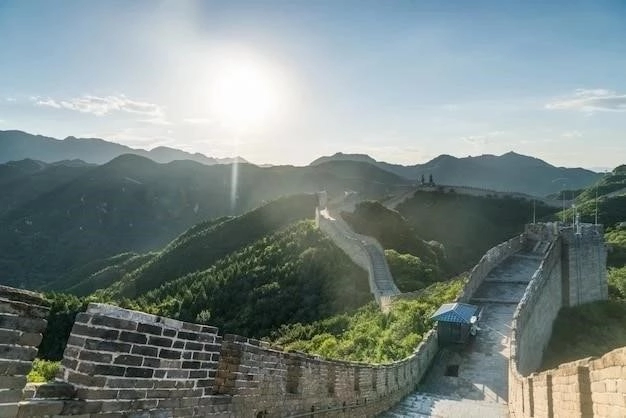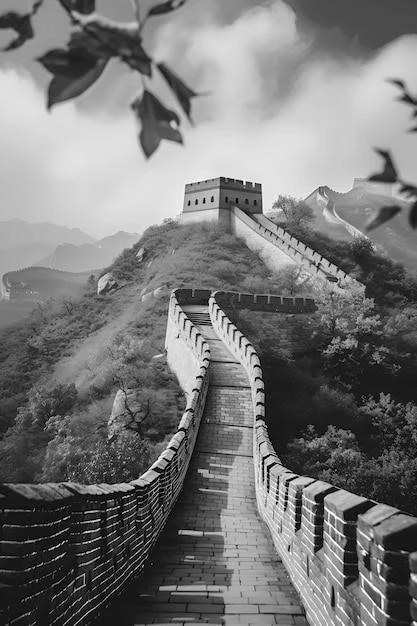The Great Wall of China, a UNESCO World Heritage site since 1987٫ stands as one of the most iconic symbols of human civilization and a testament to the ambition and ingenuity of the Chinese people․ Spanning over 13٫000 miles (21٫196 kilometers)٫ this colossal structure snakes its way across mountains٫ deserts٫ and grasslands٫ embodying a rich history spanning over two millennia․
A History of Defense
Contrary to popular belief, the Great Wall of China wasnt constructed in one go․ Its story is one of evolution, beginning in the 7th century BC during the Warring States period․ Various states erected walls for protection against invading nomads․ However٫ it was under the reign of Emperor Qin Shi Huang (221-206 BC)٫ the first emperor of a unified China٫ that these disparate walls were joined and extended٫ forming the precursor to the Great Wall we recognize today․
The primary purpose of the Great Wall was defense․ It served as a physical barrier against invading armies, primarily nomadic tribes from the north․ The walls imposing height, strategic watchtowers, and fortified passes created a formidable obstacle, slowing down enemy advances and enabling the swift deployment of troops․

Construction and Materials
Building the Great Wall was a monumental undertaking, involving millions of laborers over centuries․ The terrain it traverses varied greatly, demanding adaptable construction techniques and the use of locally sourced materials․
Materials:
- Stone: The most common material, used for its strength and availability in mountainous regions․
- Brick: Widely used during the Ming Dynasty, particularly in the eastern sections․
- Tamped Earth: A mixture of soil, sand, and gravel, compacted into layers․ This method was prevalent in areas where stone and brick were scarce․
- Wood: Employed for structural support, gates, and watchtowers․
Construction Techniques:
- Mountain Ridges: The wall often followed the natural contours of mountain ridges, utilizing the terrain as a defensive advantage․
- Passes and Gaps: Fortified passes and gates were constructed at strategic points, controlling access and funneling potential invaders․
- Watchtowers: Regularly spaced watchtowers served as lookout points, signaling stations, and garrisons for troops․

Myths and Misconceptions
The Great Wall of China has inspired numerous myths and misconceptions over the years․ One of the most prevalent is that its the only human-made structure visible from space․ While the wall is undeniably vast, its not visible to the naked eye from space, nor is it visible from the moon․
Another misconception is that the wall was built by a single dynasty․ In reality, its construction spanned centuries, with major contributions from several dynasties, most notably the Qin, Han, and Ming dynasties․

The Great Wall Today
While no longer serving its original defensive purpose, the Great Wall of China stands as a powerful symbol of Chinas history, culture, and national identity․ It attracts millions of visitors annually, offering a glimpse into the countrys rich past and architectural prowess․
However, the passage of time and environmental factors have taken their toll․ Significant portions of the wall have deteriorated, and conservation efforts are ongoing to preserve this remarkable feat of human engineering for generations to come․
Conclusion
The Great Wall of China is much more than just a wall; its a testament to human endurance, ingenuity, and the desire for security and unity․ Its a reminder of the power of collective effort and the enduring legacy of ancient civilizations․ As we marvel at its grandeur, we are reminded of the interconnectedness of history, culture, and the natural world․
Legacy and Significance of the Great Wall
The Great Wall of China, beyond its physical immensity, holds a profound place within the cultural and historical fabric of China and the world․ Its significance extends beyond its initial defensive purpose, encompassing various facets:
Symbolism and Cultural Identity
- National Icon: The Great Wall has become synonymous with China itself, embodying the nations resilience, ambition, and enduring spirit; It serves as a potent symbol of national unity, representing the collective effort of the Chinese people throughout history․
- Cultural Exchange: The walls construction spanned centuries and involved diverse groups of people, fostering cultural exchange and technological advancements․ This interplay of cultures is evident in the architectural variations and construction techniques employed along its length․

Architectural and Engineering Marvel
- Monumental Scale: The sheer scale of the Great Wall is a testament to ancient Chinese engineering and project management capabilities․ Its construction involved meticulous planning, resource allocation, and coordination over vast distances and challenging terrains․
- Innovative Techniques: The wall showcases the innovative use of materials and construction methods adapted to local conditions․ From the rammed earth sections to the intricate brickwork, each segment reflects the ingenuity of its builders․
Historical Insights
- Military Strategy: The Great Wall provides valuable insights into ancient Chinese military strategy and tactics․ Its placement, fortifications, and signaling systems offer a glimpse into the defensive strategies employed against nomadic incursions․
- Social and Economic Conditions: The construction of the wall had profound social and economic impacts, revealing much about labor organization, resource management, and societal structures of past eras․
Tourism and Preservation
- Global Attraction: As one of the most recognizable landmarks globally, the Great Wall attracts millions of visitors annually, fostering cultural exchange and understanding․
- Conservation Challenges: Preserving the Great Wall is an ongoing endeavor, requiring considerable resources and international collaboration to address the impacts of tourism, erosion, and natural deterioration․
The Great Wall of China remains a source of fascination and inspiration, prompting ongoing research and efforts to unravel its mysteries and ensure its preservation for future generations․ Its legacy extends far beyond its physical presence, serving as a powerful reminder of human ingenuity, cultural heritage, and the interconnectedness of our shared history․










